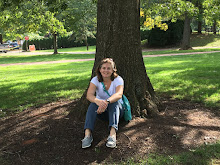These photos show our studio set-up for our community art event last June celebrating World Drawing Day. These are also great drawing prompts to try at home and with friends. See below for some ideas to get started drawing.
A selection of blocks on this table invite builders to create a structure and then draw it. This can be great practice drawing shapes and their relationships in space.
This table is set with pine cones, flowers and items from nature, offering drawing as a way to practice observation. The soothing effect of nature can be highlighted by really focusing on structure and details through drawing.
An invitation to explore! This table is set with recycled crayons, oil pastels and color sticks with an invitation to experiment with color, line, texture and mark making.
This table features oil pastels and a choice of black and white squares of paper with the suggestion to work in series to create a narrative with drawings. The suggestion is to have a beginning, middle and end. Many artists used tape to improvise books from their series.
Sometimes a big blank page is intimidating. Here artist trading cards (2.5 by 3.5 inches) are offered with an invitation to complete small drawings to trade with friends. This small format is a great invitation to fun and trying new things - a good way to get started - artists often create many small studies before beginning on a bigger piece.
The drawing and building moved to the light table, here is an example of a maze built by a young artist. The drawing of the maze is below.
Some of our favorite books about the drawing process.




 It was fun to see techniques that “think outside the card” and push the boundaries of the small 2-D format.
It was fun to see techniques that “think outside the card” and push the boundaries of the small 2-D format.












































